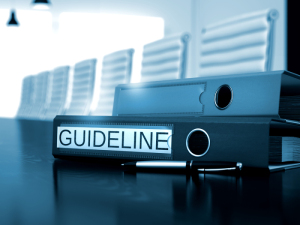Defining resection margin guidelines for WBRT following lumpectomy
by Lauren Dubinsky, Senior Reporter | August 21, 2016
Rad Oncology
Risk Management
Women's Health

May reduce health system costs
When a breast cancer patient undergoes lumpectomy for ductal carcinoma in situ (DCIS), the surgery is often followed by whole breast radiation therapy (WBRT) to eliminate any residual disease — but defining adequate resection margins for this group of early-stage breast cancer patients has been a topic of some debate.
Now, three national cancer organizations have issued a consensus guideline to bring everyone on the same page. The Society of Surgical Oncology (SSO), the American Society for Radiation Oncology (ASTRO) and the American Society of Clinical Oncology (ASCO) have determined that two-millimeters should be the standard for an adequate margin for DCIS patients who will undergo WBRT.
The establishment of this evidence-based guideline is expected to improve cosmetic outcomes and cut health care costs by reducing re-excisions — which can lead to discomfort for the patient and other complications.
A survey from 2010 revealed that 42 percent of surgeons recommended a two-millimeter margin, but 48 percent favored larger margins. That variation may be, in part, to blame for the roughly one-in-three women who are surgically treated for DCIS and are later told to undergo re-excisions.
"That 2010 study, along with other earlier studies, revealed a wide variation in the responses for both invasive cancers and DCIS margins, and demonstrated that there was no clear consensus on how a negative margin was defined," Dr. Meena Moran, director of the Yale Radiation Therapy Breast Program, told HCB News. "The responses were based on individuals' personal practices but not necessarily based on the aggregate of the existing data."
A panel established by SSO, ASTRO and ASCO reviewed 30 studies involving 7,883 patients, as well as other relevant studies, to create the guideline. They discovered that margin widths greater than two millimeters don't reduce the risk of breast cancer recurrence for women with DCIS who are treated with WBRT.
A pathologist determines margin width by painting the outer surface of the extracted tissue with ink. A negative margin means that there are no cancer cells at the outer edge of the tissue and a positive margin signifies that the cancer cells have extended to the inked tissue.
The guideline cautions that surgeons should use their clinical judgement when deciding if there is a need for further surgery in patients with negative margins that are less than two millimeters. If a patient with a negative margin is told to have a re-excision, she should ask what factors are leading the surgeon to recommend that.
"I do believe that the SSO/ASTRO/ASCO DCIS guideline will be followed as intended by most surgeons and radiation oncologists," said Moran. "It is meant to be used so that routine re-excisions will not be performed and should be used at the physicians' discretion on a case-by-case basis."
The guideline has been published in the Annals of Surgical Oncology, Practical Radiation Oncology and the Journal of Clinical Oncology. It has also been endorsed by the American Society of Breast Surgeons.
Now, three national cancer organizations have issued a consensus guideline to bring everyone on the same page. The Society of Surgical Oncology (SSO), the American Society for Radiation Oncology (ASTRO) and the American Society of Clinical Oncology (ASCO) have determined that two-millimeters should be the standard for an adequate margin for DCIS patients who will undergo WBRT.
The establishment of this evidence-based guideline is expected to improve cosmetic outcomes and cut health care costs by reducing re-excisions — which can lead to discomfort for the patient and other complications.
A survey from 2010 revealed that 42 percent of surgeons recommended a two-millimeter margin, but 48 percent favored larger margins. That variation may be, in part, to blame for the roughly one-in-three women who are surgically treated for DCIS and are later told to undergo re-excisions.
"That 2010 study, along with other earlier studies, revealed a wide variation in the responses for both invasive cancers and DCIS margins, and demonstrated that there was no clear consensus on how a negative margin was defined," Dr. Meena Moran, director of the Yale Radiation Therapy Breast Program, told HCB News. "The responses were based on individuals' personal practices but not necessarily based on the aggregate of the existing data."
A panel established by SSO, ASTRO and ASCO reviewed 30 studies involving 7,883 patients, as well as other relevant studies, to create the guideline. They discovered that margin widths greater than two millimeters don't reduce the risk of breast cancer recurrence for women with DCIS who are treated with WBRT.
A pathologist determines margin width by painting the outer surface of the extracted tissue with ink. A negative margin means that there are no cancer cells at the outer edge of the tissue and a positive margin signifies that the cancer cells have extended to the inked tissue.
The guideline cautions that surgeons should use their clinical judgement when deciding if there is a need for further surgery in patients with negative margins that are less than two millimeters. If a patient with a negative margin is told to have a re-excision, she should ask what factors are leading the surgeon to recommend that.
"I do believe that the SSO/ASTRO/ASCO DCIS guideline will be followed as intended by most surgeons and radiation oncologists," said Moran. "It is meant to be used so that routine re-excisions will not be performed and should be used at the physicians' discretion on a case-by-case basis."
The guideline has been published in the Annals of Surgical Oncology, Practical Radiation Oncology and the Journal of Clinical Oncology. It has also been endorsed by the American Society of Breast Surgeons.
You Must Be Logged In To Post A CommentRegisterRegistration is Free and Easy. Enjoy the benefits of The World's Leading New & Used Medical Equipment Marketplace. Register Now! |
|









